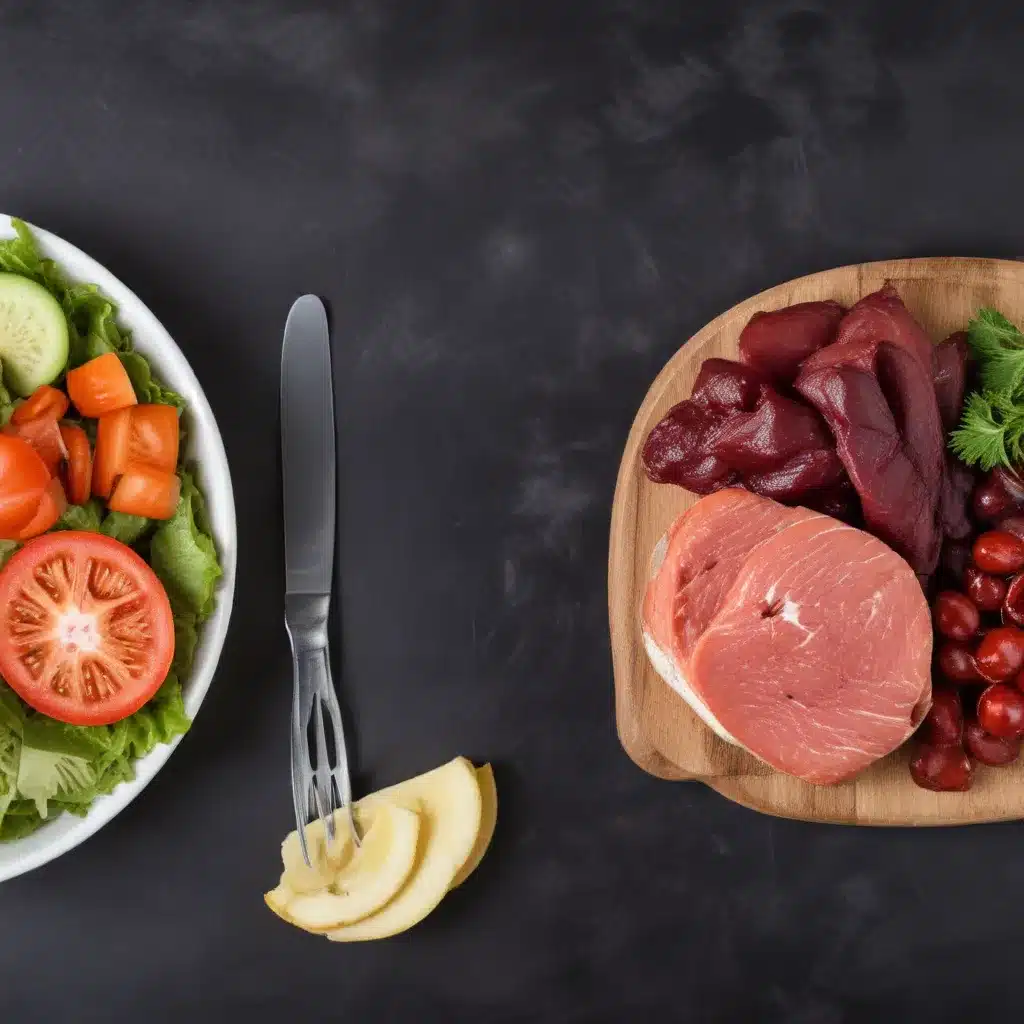
Uncovering the Chemistry of Culinary Combinations
As seasoned culinary professionals, we’ve all experienced the joy of discovering unexpected flavor pairings that tantalize the taste buds. But what lies beneath these harmonious combinations? Through the lens of food science, we can uncover the surprising chemistry that connects seemingly disparate ingredients, shedding light on the principles that guide our culinary intuitions.
Flavor Compounds: The Building Blocks of Taste
At the core of food pairings is the concept of shared flavor compounds. Food scientists and chefs have been diligently investigating the intricacies of ingredient profiles, comparing the unique blend of aromatic molecules that contribute to each food’s distinct taste. By mapping the flavor compounds present in various ingredients, researchers have uncovered some fascinating patterns.
For example, did you know that chocolate and blue cheese share more than 70 flavor compounds? While this may seem like an unlikely pairing, the underlying chemical similarities make it a potentially harmonious match. Similarly, white wine and parmesan cheese are close in flavor chemistry, as dairy products and fruits tend to share a significant number of compounds with alcoholic beverages.
Mapping the Flavor Networks
To better understand these culinary connections, a team of researchers at Northeastern University in Boston set out to analyze the flavor profiles of thousands of recipes from around the world. By examining data from recipe sites in North America, Western Europe, Southern Europe, Latin America, and East Asia, they sought to uncover the patterns that guide our food pairings.
Their findings revealed some intriguing insights. North American and Western European recipes tended to have a higher incidence of compound-sharing pairs, suggesting a more intuitive understanding of complementary flavors. Interestingly, the reverse was true for East Asian dishes – the more flavor compounds two ingredients shared, the less likely they were to be used together in the same recipe.
The reasons behind these regional differences remain a mystery, but the researchers’ work has provided a valuable framework for understanding the underlying logic behind our culinary choices. By recognizing the chemical affinities between ingredients, chefs and home cooks alike can venture beyond traditional pairings and explore new and exciting flavor combinations.
The Science of Sweet and Salty
One of the most well-documented flavor pairings is the combination of sweet and salty. From salted caramel to chocolate-covered pretzels, this dynamic duo has captured the hearts (and taste buds) of food enthusiasts worldwide. But what’s the science behind this classic pairing?
According to a study published in the Proceedings of the National Academy of Sciences, sweet and salty foods activate specialized receptors on the tongue known as SGLT1. These receptors, responsible for detecting sweetness, are enhanced by the presence of salt, leading to an amplified perception of sweetness. This synergistic effect is why salty and sweet flavors complement each other so well, creating a harmonious and highly satisfying taste experience.
Contrasting Temperatures: The Hot-and-Cold Factor
The art of food pairing extends beyond just flavors – temperature can also play a crucial role in elevating the overall dining experience. The contrast between hot and cold elements can stimulate different parts of the brain, resulting in a more engaging and pleasurable culinary encounter.
Think about the classic combination of ice cream and warm apple pie. The cool creaminess of the ice cream is heightened by the comforting warmth of the freshly baked pastry, creating a dynamic interplay of sensations that delights the senses. This principle applies to a wide range of food pairings, from milkshakes and french fries to steaming soup and crisp croutons.
By understanding the science behind these temperature-based pairings, chefs and home cooks can employ this technique to craft dishes that captivate the palate and elevate the overall dining experience.
Unlocking the Beer-Food Puzzle
As a seasoned culinary professional, I’ve always been fascinated by the potential for beer to be a versatile and sophisticated pairing companion. Recent scientific studies have shed light on the complex flavor chemistry that underpins successful beer-food combinations.
One of the leading hypotheses in food pairing is the concept of shared flavor compounds. Researchers have compiled extensive databases of the chemical compositions of various food items, including beer. Their analysis revealed that beer shares a significant number of flavor-active compounds with a wide range of ingredients, from blue cheese and cheddar to beef, coffee, and even rutabaga.
This chemical overlap explains why certain beer styles pair so seamlessly with specific dishes. For example, the robust malt and hop profiles of a stout complement the rich, savory notes of roasted meats and aged cheeses, while the bright, hoppy character of an IPA can balance the heat and spice of Thai or Indian cuisine.
By delving into the science behind these pairings, we can move beyond traditional beer-and-pretzel suggestions and explore a vast, untapped world of culinary creativity. Whether it’s experimenting with tea-infused ales or crafting unique beer-based marinades, the possibilities are endless when we approach beer as a versatile and sophisticated ingredient in its own right.
Embracing the Unexpected
As we’ve explored, the science of food pairings is a complex and fascinating field, with insights that can elevate our culinary experiences in unexpected ways. By understanding the underlying principles of shared flavor compounds, temperature contrasts, and the interplay of sweet and salty, we can venture beyond the familiar and discover new and exciting taste sensations.
Whether you’re a professional chef or a passionate home cook, embracing the science of food pairings can open the door to a world of culinary exploration. So the next time you’re perusing the fridge or pantry, don’t be afraid to experiment with unexpected combinations – you never know what delightful discoveries may await.
To learn more about the latest advancements in culinary science and to stay up-to-date on the latest trends and techniques, be sure to visit https://kitchenwarrior.co.uk/. Our team of seasoned experts is dedicated to empowering home cooks and professional chefs alike with the knowledge and tools they need to become true kitchen warriors.


